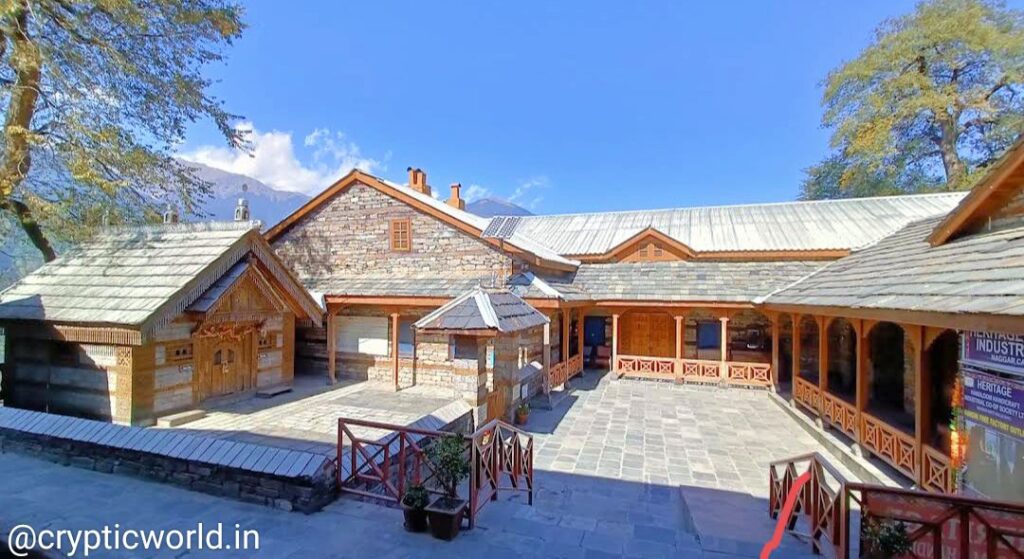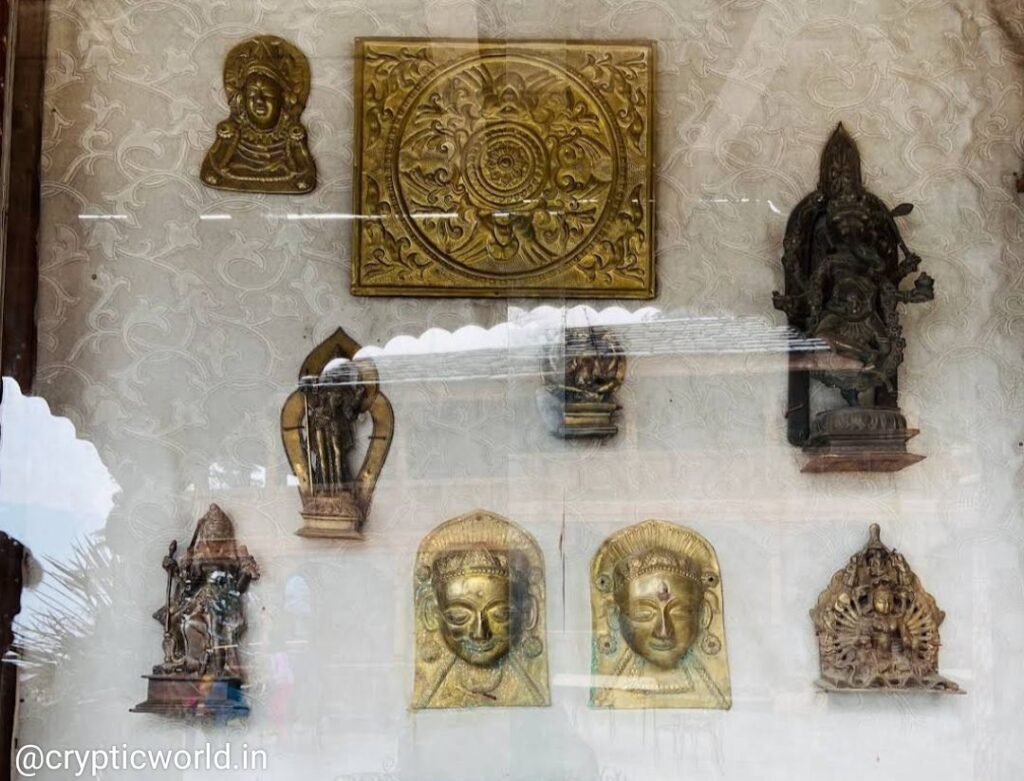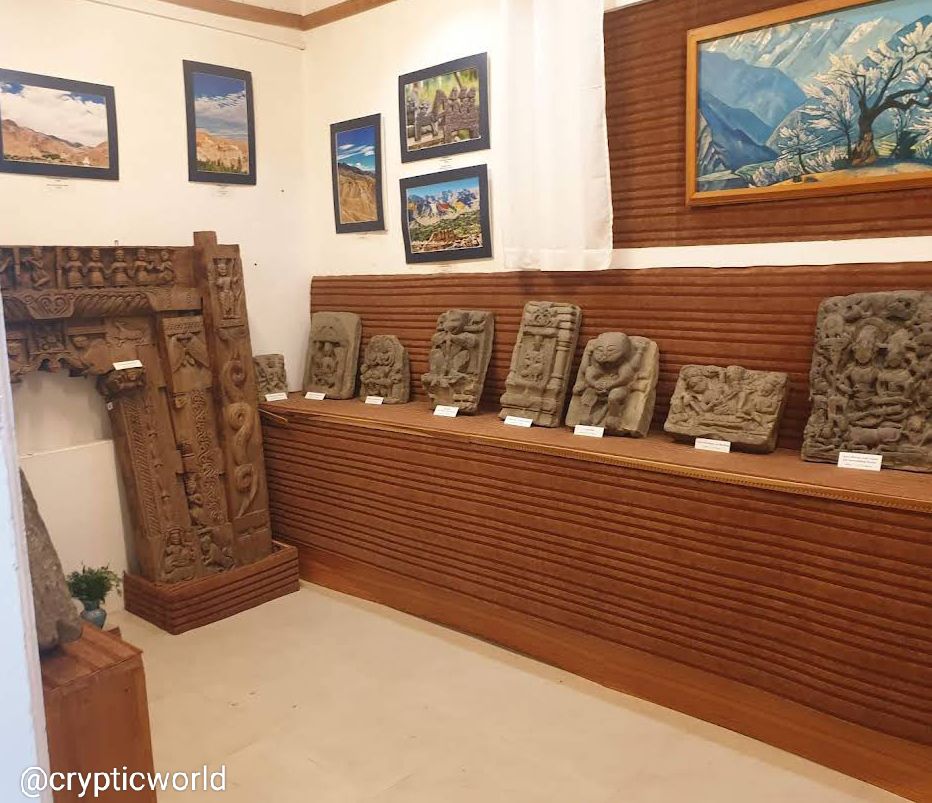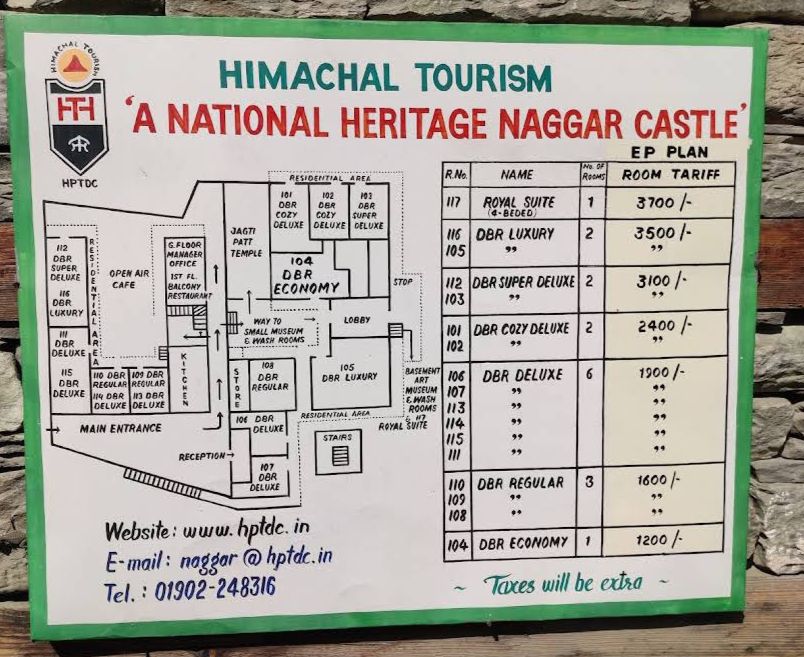Table of Contents
Introduction to Naggar Castle
Nestled within the majestic Himalayas, Naggar Castle is evidence of the architectural magnificence and rich cultural tradition of Himachal Pradesh. Situated on a hill facing the breathtaking Kullu Valley, this mediaeval fortress radiates a timeless majesty and fascination. Throughout the highs and lows of historical events, Naggar Castle has stood as a tribute to strength, dignity, and endurance since its founding several centuries ago.

Constructed in the traditional Himalayan architectural style, Naggar Castle’s beautiful woodwork, finely carved details, and massive stone walls witness to its glorious past. Raja Sidh Singh of Kullu initially built the fortress in the fifteenth century as a royal residence. It has experienced several modifications and additions over time, all of which have enhanced its charm. Apart from its breathtaking design, Naggar Castle holds a special place in the hearts of the people as a hub of culture and a meeting point for celebrations, festivals, and rituals. The aroma of home-cooked Himachali food, traditional music, and the laughter of children fill the courtyards, giving visitors a glimpse into the vibrant fabric of mountain life.
Wandering through the curving routes and stumbling staircases of Naggar Castle takes tourists to an era of chivalry, romance, and mystery. The entire castle screams to be explored, from the grand interiors with their fine collection of antique furniture and precious artwork to the breathtaking views of the neighbouring valleys and snow-capped peaks outside. In the sections that follow, we’ll go into more detail about Naggar Castle’s history, architectural style, cultural significance, and tourism offerings. We want to take readers on an exciting journey through time and the stunning scenery of Himachal Pradesh.
History of Naggar Castle
Nestled in the picturesque hills of Himachal Pradesh, Naggar Castle is a massive structure with a complex and rich history that dates back to the 15th century. Built by Raja Sidh Singh of Kullu, the castle functioned for more than 140 years as both a powerful fortress and the royal home. Its advantageous position on a hill gave it a commanding view of the the plains below, making it the perfect defensive stronghold in times of conflict.
Naggar Castle saw the rise and fall of dynasties and rulers in the area over the ages. The Kullu kings took possession of the fortress in the seventeenth century, and they strengthened and enlarged its constructions. Raja Bhosal, a well-known king of the area, used it as his official residence throughout the 19th century. He added more architectural features to the castle, combining Tibetan and Western influences with traditional Himalayan customs.
As a hub for government, culture, and religion, Naggar Castle was important to many historical events during its existence. The Kullu Valley’s political and cultural environment was shaped by the royal courts, diplomatic talks, and religious rituals it held. But by the middle of the 20th century, the castle had become ruined due to a combination of neglect and decay.
The architectural and historical legacy of Naggar Castle has been carefully restored and preserved in the last few decades. With the help of local communities and government initiatives, restoration projects have given the castle new life and made it a popular tourist and cultural destination. Today, thousands of people visit Naggar Castle to take in the breathtaking views of the surrounding Himalayan peaks and green valleys, as well as admire its magnificent architecture and learn about its rich history.
Also read- Chail- A Hidden Gem in Himachal Pradesh
Architecture and Design of Naggar Castle
The architectural wonder that is Naggar Castle skillfully combines Tibetan and Western architectural elements with traditional Himalayan craftsmanship. With its enormous stone architecture, towering walls, and carefully carved wooden exterior, the castle has a dominating presence as it lies majestically on a hill overlooking the Kullu Valley.
The castle’s architectural design was created to maximise its defensive potential and offer luxurious royal-quality living quarters. Naggar Castle is made up of a network of interconnecting structures centred around a central courtyard, most of which were built using stone and wood that was obtained locally. From living quarters and administrative offices to storage facilities and ceremonial halls, every building has a distinct purpose.
The beautiful wooden carvings that cover the complex’s entrance, windows, and balconies are among Naggar Castle’s most remarkable characteristics. These exquisite carvings show off the artists’ expert craftsmanship and feature a wide range of themes, such as floral patterns, mythical animals, and religious symbols. Wood is a useful building element that provides insulation against the harsh mountain temperature of the area, in addition to adding to the castle’s visual appeal.
Naggar Castle’s interior is just as stunning, with beautifully painted ceilings, detailed paintings, and beautiful sculptures adorning the halls and chambers. The living rooms of the castle are large, reflecting the wealth and status of its previous occupants, with elegant furniture, tapestries, and artwork adorning the rooms. Naggar Castle’s great courtyard, a calm retreat encircled by curved columns and shaded corners, is located at its centre. As a place of social gathering, the courtyard is used by both locals and guests to relax, socialise, and take in the stunning views of the surroundings.
In order to maintain its architectural integrity and guarantee its longevity for future generations to enjoy and respect, Naggar Castle has undergone significant restoration work in recent years, despite its centuries-old past. The castle invites guests to travel back in time and experience the lavishness of a bygone era among the beauty of the Himalayas, serving as a testimony to the rich cultural legacy of Himachal Pradesh.
Also read- Malana- Himachal’s Untouched Beauty
How to reach Naggar Castle
A trip through time and beauty, a visit to Naggar Castle provides a window into the magnificent scenery and storied past of Himachal Pradesh. This is an in-depth guide to help you organise your visit:
1. Transportation: Naggar is located in Himachal Pradesh, some 22 kilometres from the town of Manali, in the direction of Kullu. The most common way to get to Naggar is via car. Depending on traffic and road conditions, it can take 45 minutes to an hour to get there by car or by taxi from Manali. As an alternative, you can also travel to Naggar via local bus from Manali Bus Stand.
2. Entry Fee and Timings: It’s important to confirm Naggar Castle’s entry fee and opening and closing times before organising your trip. The castle is usually open from morning to evening, and guests must pay an entry fee of about Rs 30 to enter. Before you book your travel, it is recommended to find out the current schedule and costs from local government agencies or tourism offices.
3. Exploring the Castle: When you go to Naggar Castle, spend some time looking around the displays, courtyards, and beautiful architecture. There are regularly guided tours offered that provide information about the castle’s significance and history. From the castle’s high points, take in the beautiful wood carvings, historic artefacts, and expansive vistas of the neighbouring mountains and valleys.

4. Nearby Attractions: Explore the Nicholas Roerich Art Gallery, which features the creations of the well-known Russian artist who called Naggar home, and other neighbouring sites while in Naggar Castle. In order to engage with locals, learn about their culture, and purchase handicrafts and mementos from the village.

5. Accommodation and Dining: If you want to stay in Naggar longer, there are a variety of lodging options in and around the village, from luxury hotels to more affordable guesthouses. If you’re lucky, you can also get a room in the castle. You may also enjoy the flavours of Himachali food at cafés and restaurants that provide delicious regional cuisine.

Also read- Bijli Mahadev- A Spiritual visit in the heart of the Himalayas
Cultural Significance of Naggar Castle
As a representation of the artistic and cultural history of Himachal Pradesh, Naggar Castle has great cultural significance. This is a thorough examination of its cultural significance:
1. Historical Legacy: Naggar Castle, which dates back more than 500 years, is a physical reminder of the area’s royal heritage. It was an important part of the socio-political environment of the region and the home of the Kullu Valley’s rulers. With its delicate wood carvings and traditional Himachali design elements, the castle’s building reflects the workmanship and architectural style of the time, providing important insights into the artistic and cultural choices of that time.
2. Artistic Heritage: Naggar Castle is a centre of artistic expression as well as a monument to Himachal Pradesh’s architectural past. Ancient sculptures, paintings, and other artefacts that reflect the creative abilities of the local craftsmen and artisans are kept in the castle’s varied collection. By admiring the castle’s exquisite wood carvings, detailed paintings, and luxurious furniture, visitors can develop a greater understanding of the artistic traditions that have long flourished in Himachal Pradesh.
3. Cultural Preservation: Apart from its artistic and historical importance, Naggar Castle is essential to the promotion and preservation of Himachal Pradesh’s cultural legacy. With exhibitions, workshops, and performances honouring the traditional music, dance, and crafts of the area, the castle serves as a museum and cultural hub. Through these programmes, Naggar Castle teaches tourists about Himachal Pradesh’s rich cultural legacy while simultaneously giving local craftspeople and artists a stage on which to display their work and pass on their customs to coming generations.
4. Tourism and identity: With its rise to fame as a landmark and popular tourist destination, Naggar Castle draws tourists from all over the world who come to discover its cultural atmosphere and historical significance. The castle’s importance to Himachal Pradesh’s tourism industry has raised the state’s profile internationally and strengthened its reputation as a historical, artistic, and culturally rich destination.
5. Community Engagement: In addition to serving as a tourist destination, Naggar Castle encourages pride and community involvement among the local population. People from every field of life gather together to celebrate their common history and customs at the castle, which acts as a hub for cultural events, festivals, and festivities. By means of these collective efforts, Naggar Castle strengthens personal relationships, cultivates a feeling of participation, and advances cross-cultural interaction and understanding between inhabitants and guests.
All things considered, Naggar Castle serves as a symbol of Himachal Pradesh’s rich cultural legacy, conserving the history, artwork, and customs of the area for future generations. Its importance goes well beyond only its stunning architecture; it is a dynamic representation of the determination, creativity, and cultural diversity of the people of Himachal Pradesh.
If you’ve enjoyed reading this, you might like:
